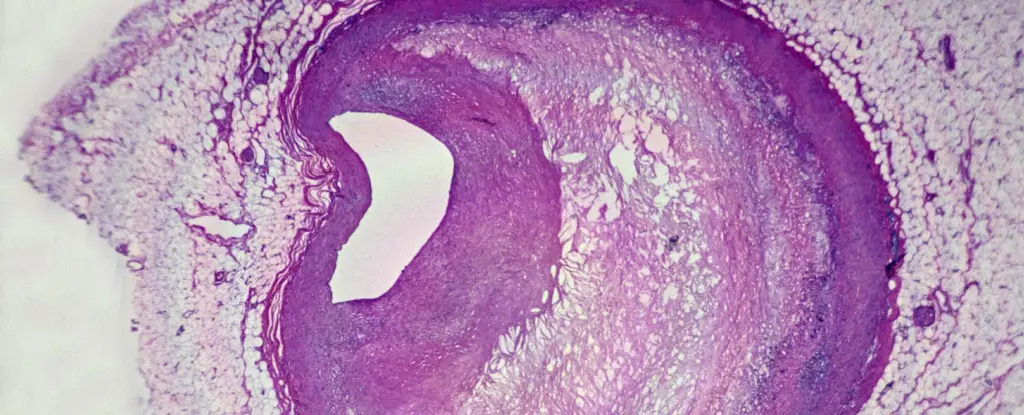In recent years, the prevalence of microplastics has escalated from a niche topic of academic research to a pressing public health concern. These tiny particles, often less than 5 millimeters in size, have infiltrated our environment to such an extent that they can be detected in the air we breathe, the water we drink, and even the food we eat. Alarmingly, groundbreaking studies now suggest that microplastics may be accumulating within our bodies, particularly in vital organs like the lungs and liver, raising questions about their impact on human health. The latest findings from researchers highlight a disturbing correlation between these ubiquitous plastics and cardiovascular diseases, including heart attacks and strokes.
The Unsettling Connection Between Microplastics and Heart Disease
The research spearheaded by Dr. Ross Clark from the University of New Mexico delves into the alarming presence of microplastics within arterial plaque — the fatty deposits that can lead to severe cardiovascular events. Although the preliminary findings have not yet passed through rigorous peer review, they set the stage for serious contemplation regarding the implications of microplastics on heart health. Dr. Clark’s study found staggering differences in plastic concentrations between healthy arteries and those plagued by disease: while healthy arteries showed a baseline level of microplastics, diseased arteries contained an astonishing 16 times more plastic. For individuals who had already suffered strokes or mini-strokes, the situation proved even more dire, with microplastic levels soaring to 51 times that of healthy arteries.
This profound disparity raises urgent questions: Are microplastics behaving as mere spectators in the process of arterial disease, or could they be active participants exacerbating inflammation and plaque build-up? Neuroscientist Jaime Ross characterized the findings as “very shocking,” emphasizing that her past research indicated that even slight variations in biologically relevant measures can have significant implications for health.
Deciphering the Mechanisms Behind Microplastic Accumulation
One cannot overlook the complexities of pinpointing the exact role microplastics may play in creating or exacerbating cardiovascular diseases. Dr. Clark’s team ventured to investigate the gene expression within arterial plaque samples, ultimately revealing that cells situated in high-plastic environments exhibited altered genetic activity compared to those with lower plastic concentrations. Of particular importance was the observation that an immune cell gene associated with reducing inflammation became inactive in the presence of the higher plastic load.
The findings suggest that microplastics could be influencing biological processes in a manner that leads to increased inflammation and potentially accelerated heart disease progression. Given that inflammation is known to be a significant contributor to many chronic health conditions, the possibility that microplastics are altering immune responses warrants serious attention and further investigation.
The Quest for Comprehensive Understanding and Solutions
Mapping microplastic pathways in the human body is still an emerging field, fraught with challenges. One of the major hurdles is accurately quantifying the concentration of various plastic types in biological samples without interference from lipid breakdown products. Although Clark’s team employed stringent methods to isolate plastics, such as heating samples to extremities that break down polymer structures, the potential for overlapping chemical signatures complicates definitive conclusions.
The need for more rigorous methodology and larger cohorts is evident. Dr. Clark is actively seeking funding to expand this critical research area, aiming to explore the biological interactions between microplastics and immune cells throughout different vascular systems. By conducting animal experiments to establish a cause-and-effect relationship, the hope is to elucidate whether microplastics are merely correlating with health issues or are indeed contributing factors.
Future Implications and Call for Action
As we stand at the precipice of new health discoveries regarding microplastics, the broader implications cannot be understated. Given that cardiovascular diseases remain a leading cause of mortality worldwide, understanding the potential role of environmental pollutants, such as microplastics, in degrading heart health must be prioritized.
The research findings serve as a clarion call for both the scientific community and policymakers alike to address the microplastic plague that is infiltrating our lives. Although definitive conclusions remain elusive, the interconnectedness of environmental health and human health has never been clearer. A proactive stance is necessary—not just in scientific inquiry but also in devising tangible solutions to reduce microplastic production and mitigate its impact on our bodies and other living ecosystems.
As we pursue answers to these lingering questions, there lies a sense of urgency; the implications of microplastics in our bodies could represent a significant threat, underscoring a critical intersection of environmental stewardship and public health that demands immediate attention.


Leave a Reply